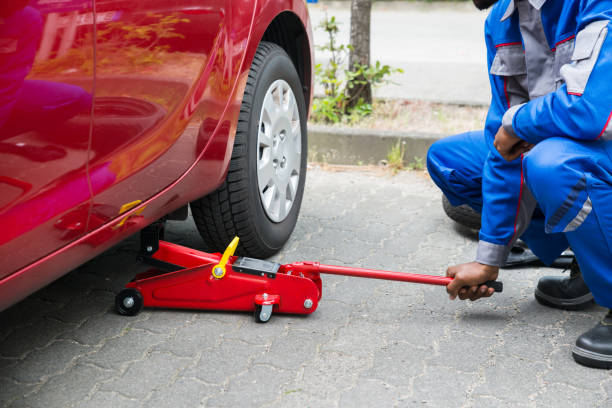If you’ve ever found yourself in a situation where you need to lift heavy loads, a hydraulic jack can be your best friend. This versatile tool can help you with tasks ranging from changing a tire to shoring up beams. In this guide, we’ll delve into the inner workings of hydraulic jacks, explore various models and their prices, and provide practical tips on how to use them safely and efficiently.
How a Hydraulic Jack Works
At the heart of a hydraulic jack lies a simple yet ingenious principle. It operates using a manual pump, which you, as the operator, control. When you pump the handle, it generates pressure measured in bars. This pressure is directly proportional to the lifting force, typically measured in decanewtons, applied to the jack’s cross-section, often in square centimetres (cm²).
Lowering the jack is achieved by releasing a valve, typically a tap or by rotating a lever, which allows the hydraulic fluid to return, lowering the load.
Hydraulic Jacks: Models and Prices

In the consumer market, you’ll find two primary types of hydraulic jacks: the static jack and the rolling jack. Professional-grade equipment exists but is considerably more expensive and geared towards intensive use.
Static Hydraulic Jack:
The static hydraulic jack, often shaped like a bottle, is a compact and powerful tool capable of lifting loads ranging from 1 to 20 tons. While it’s commonly used as a replacement for a vehicle’s original jack, it has a broader range of applications. Crafty DIY enthusiasts have repurposed it for building presses, log splitters, lifting tables, and various other hydraulic systems.
For vehicle-related tasks, a 2-tonne jack is typically more than adequate and consumes minimal storage space.
Hydraulic Rolling Jack:
The hydraulic rolling jack is equipped with wheels and designed to lift lighter vehicles, usually in the range of 1.5 to 2 tons. This tool simplifies vehicle maintenance by offering convenience and safety:
- Its castors enable effortless maneuverability beneath the vehicle.
- Many rolling jacks feature a foot pedal for rapid lifting and a hand lever for fine adjustments.
- Extra-flat rolling jacks are available, making them ideal for low-profile vehicles.
Price Considerations
Hydraulic jacks come in a wide price range, from approximately $20 to $200, depending on their build quality and lifting capacity. It’s advisable to invest in a reputable brand, which may cost around $150. While this might seem pricier, it ensures reliability and safety, making it a wise long-term choice. Avoid purchasing obscure brands online, as quality and safety may be compromised.
Using a Hydraulic Jack: Practical Tips
Safety should be your utmost priority when working with a hydraulic jack, especially when tasks involve crawling under a lifted vehicle. Here are essential guidelines to ensure your safety:
- Always use jack stands alongside your hydraulic jack. Jack stands act as crucial backups, preventing the vehicle from collapsing in case of jack failure.
- Work on a flat, sturdy surface capable of supporting the vehicle’s weight without the jack sinking into the ground.
- Identify the designated lifting points and jack locations on the vehicle. These points are often indicated by triangular markings on the underbody or mentioned in the vehicle’s technical manual.
- Verify that the jack’s lifting capacity matches the vehicle’s weight.
- As an added safety measure, chock the wheels on the opposite side of the lifting area to prevent unintended movement.
- When using a rolling jack, ensure it moves in tandem with the vehicle’s lift to avoid any unwanted shifts.
- Once the vehicle is adequately lifted, position the jack stands and gently lower the vehicle until it rests securely on them while keeping the hydraulic jack pressurized.
Maintenance Tips
Maintaining your hydraulic jack is relatively straightforward:
- Before each use, inspect the jack for any visible damage or oil leaks.
- Keep the jack clean, and periodically check all bolts and nuts for tightness.
- During the lifting process, pay attention to any pressure drops, ensuring a controlled and gradual descent of the load.
By understanding the mechanics, types, and safe operating procedures for hydraulic jacks, you can confidently tackle various tasks with efficiency and peace of mind. Happy lifting!




